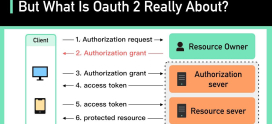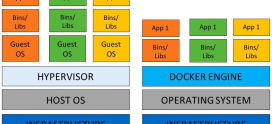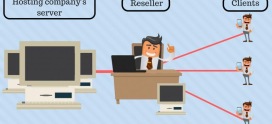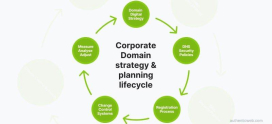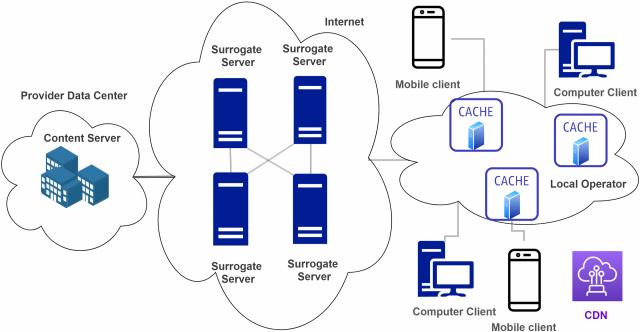
The Future of CDNs: Trends to Watch in 2024 and Beyond
Ever tried to watch a live sports event online only to end up frustrated because of endless buffering? Or maybe you’ve clicked on a webpage, and it felt like ages before it loaded? If you’ve faced these challenges, you’re not alone. We live in a fast-paced digital age where waiting more than a few seconds for content to load can feel like an eternity. As consumers, we want fast, reliable access to everything online. But how can this demand be met? That’s where Content Delivery Networks (CDNs) come into play.
You might be wondering, ”What exactly is a CDN, and why should I care?” Think of a CDN as a network of delivery trucks working around the clock to ensure your online content arrives as quickly as possible, no matter where you are. With the rapid evolution of digital content and the internet as a whole, understanding CDNs is increasingly necessary. And here’s the good news—the future of CDNs is looking brighter than ever. In this article, we’ll dive into what trends to watch in 2024 and beyond, so you’ll be well-equipped to navigate the online landscape of tomorrow.
So, grab a seat, and let’s embark on this journey together!
Understanding the Basics: What is a CDN?
A CDN is a system of distributed servers that deliver web content to users based on their geographic location. Imagine you order a pizza, and instead of having it made from scratch at a restaurant far away, it comes from a local pizzeria that whipped it up just minutes before it arrived at your door. That’s the efficiency of a CDN!
How Does a CDN Work?
When you access a website that uses a CDN, the content is delivered from the nearest server rather than the website’s original host server. This can significantly reduce loading times and enhance the user’s experience—particularly important for global businesses.
1. The Rise of Edge Computing
As we head into 2024, one significant trend is the growth of edge computing. Rather than relying solely on centralized data centers, companies are pushing computing resources closer to the data source. Think of edge computing like having mini pizza ovens placed around the city. Rather than relying on just one restaurant downtown, you can get fresh pizza from the stovetop closest to you, ensuring that it’s hot and ready as quickly as possible.
Why It Matters
This shift can considerably lower latency and improve overall performance, especially for businesses dealing in real-time data, video streaming, and gaming. With such advancements, we can expect CDNs to adapt, distributing not just data but processing power too.
2. Enhanced Security Features
Security is a top concern in our digital world. With the increasing number of cyberattacks, CDNs are stepping up their game by incorporating stronger security protocols.
What to Expect in 2024
We will likely see a rise in the use of security features such as Web Application Firewalls (WAFs), DDoS protection, and enhanced encryption methods. This added layer of security will be critical for protecting sensitive data and keeping users’ information safe.
3. AI and Machine Learning Integration
Artificial Intelligence (AI) and Machine Learning (ML) are set to revolutionize CDNs by improving how content is delivered and consumed. Imagine a smart assistant that can predict your needs before you even express them. That’s the potential of AI in CDNs!
Personalizing User Experience
In 2024, expect CDNs to leverage AI to analyze user behavior, leading to more personalized content delivery. This means faster access to what you like and want to see, making your online experience smoother and more enjoyable.
4. The Push for Eco-Friendliness
With global awareness about climate change on the rise, many companies are striving for sustainable practices. CDNs are no exception. The future will see an increasing emphasis on eco-friendly technologies.
Green CDNs
This could range from utilizing renewable energy sources in data centers to optimizing delivery routes to minimize carbon footprints. Sustainable choices can resonate positively with consumers and create a better world for future generations.
5. 5G Technology’s Impact
The roll-out of 5G technology is creating waves in how content is delivered. With faster speeds and enhanced connectivity, we can expect a more seamless online experience.
Benefits for CDNs
CDNs will harness 5G to facilitate enhanced streaming, faster downloads, and smoother gaming experiences. This shift will benefit consumers and businesses by enabling richer, more engaging content, just like being front row at a concert without the hassle of crowds.
6. The Growth of Video Content
Video consumption is booming, with platforms like YouTube and TikTok leading the charge. As the appetite for video content increases, CDNs will have to adapt to meet this demand.
Strategies for Delivery
Expect to see CDNs offering specialized solutions for video delivery, including better caching and streaming technologies. This adaptation will ensure that your favorite video content plays smoothly, no matter where you are.
7. Improved Customer Support
As competition among CDN providers heats up, customer support quality will become a key differentiator. Companies will focus on providing quick resolutions and guidance to customers navigating the complexities of digital content delivery.
User-Centric Focus
The goal is to ensure that businesses and end-users feel supported and understood, contributing to overall satisfaction and loyalty in the long run.
8. Multi-CDN Strategies
More companies are adopting multi-CDN strategies to mitigate risks and optimize performance. By utilizing multiple CDN providers, businesses can ensure reliability, speed, and better uptime.
The Balancing Act
This approach offers a safety net—if one CDN experiences issues, the others can step in to fill the gap, much like having a backup plan for your travel itinerary in case of unexpected flight cancellations.
FAQs
What are the primary functions of a CDN?
CDNs mainly function to reduce latency, enhance load times, improve security, and optimize bandwidth for delivering content efficiently.
How does a CDN improve website performance?
By storing cached versions of content on multiple servers globally, CDNs ensure that users receive data from the nearest location.
Are there security benefits to using a CDN?
Yes, CDNs provide strong security features, including DDoS protection and WAFs, to safeguard against various cyber threats.
Can a CDN affect SEO?
Absolutely! Faster load times can lead to improved user experience and lower bounce rates, positively influencing your website’s search ranking.
Is it cost-effective to use a CDN?
Using a CDN can be cost-effective in the long run by reducing bandwidth charges and minimizing the load on your origin server.
How do I choose the right CDN provider?
Selecting a CDN provider depends on your specific needs, such as speed, scalability, pricing, and customer support. Always compare multiple providers!
What role will AI play in CDNs?
AI will enhance CDNs by optimizing data delivery based on user behavior, facilitating a more personalized experience for consumers.
Will multi-CDN strategies become the norm?
Yes, many companies are moving towards multi-CDN strategies for increased reliability and performance optimization, utilizing multiple providers to ensure consistent service.
understanding the trends shaping content delivery networks in 2024 and beyond can help businesses and consumers navigate the digital landscape more effectively. With advancements in edge computing, enhanced security measures, and the integration of AI, the future of CDNs looks promising. As we embrace these changes, we can expect faster, more secure, and more personalized online experiences that meet the increasing demands of today’s digital users.
So, whether you’re streaming a live sports event, browsing your favorite videos, or accessing crucial information online, better performance is on the horizon thanks to these exciting developments within the CDN space. Stay tuned—it’s going to be an exciting ride!


